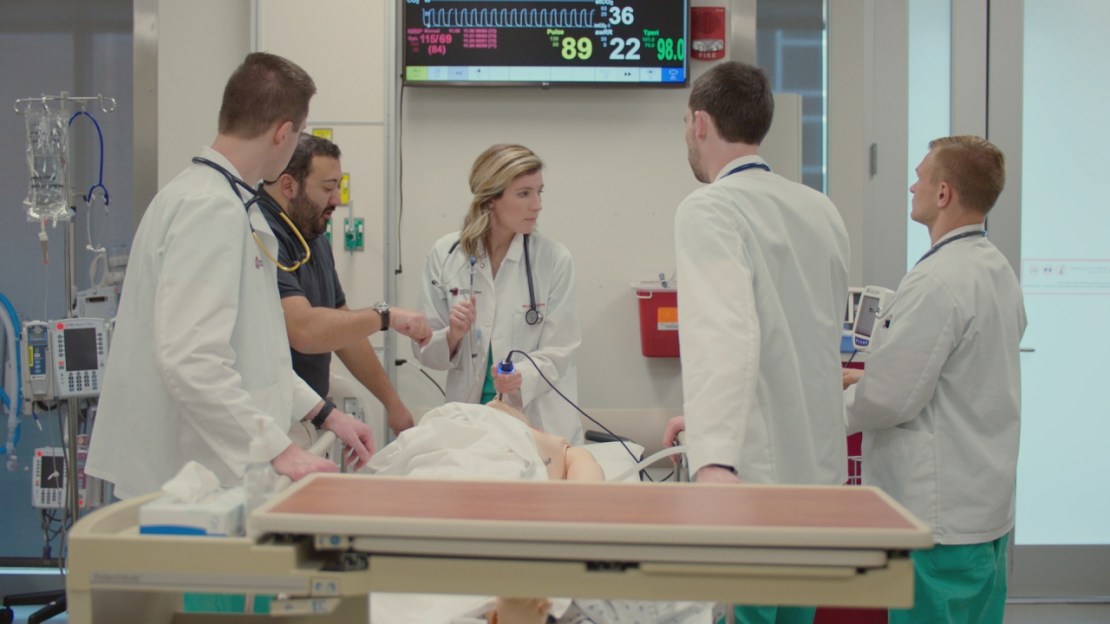Eli Kaberon, March 21, 2020
In nearly every line of work, a training period takes place prior to a job being started. Sometimes it?s a quick tutorial given by a boss or manager. Other times, it?s an in-depth lesson done in by an instructor in a classroom setting.
For those studying at The Ohio State University College of Medicine, the Clinical Skills Education and Assessment Center (CSEAC) is where their training takes place. Future doctors, nurses and healthcare professionals can prepare for their careers in the center?s 14 exam rooms and 40-seat classroom, helping them learn the critical skills needed for those important jobs.
?The idea behind the Clinical Skills Center is that this is a place where our trainees can practice the skills that they?re learning before they are encountering real patients,? said Dr. Christopher San Miguel, a physician of emergency medicine at Ohio State. ?So we have the opportunity to run through difficult scenarios and troubleshoot in the moment with trainees, in a safe space. Once they?re doing it, it is the goal that it feels very real to them, though? I mean, you?re able to– obviously, they know it?s not a ?real? person, but I would imagine if it?s really working, they almost enter a zone where they?re feeling that the stakes are high, that this is a real life that they?re dealing with because you?re presenting them with life or death scenarios.?
The ability to replicate real-life environments is what makes the CSEAC unique. Instructors attempt to suspend disbelief, so that learners are forced to buy-in and engage with the scenario they are presented and use the skills they have learned in the classroom to produce the desired results. By replicating realistic situations, they hope that students don?t feel tremendous pressure when they face them again outside of CSEAC.
Michelle Feeney, a fourth-year medical student, said that training at CSEAC helps her tremendously as she applies for an emergency medicine residency.
?I think the Clinical Skills Center helps me most in building my confidence and honing my skills,? Feeney said. ?In medical school, you don?t want to be out on a rotation trying something for the first time when it matters and it?s with a real patient, and being able to practice things like intubations, chest compressions, running a code, just more tricky scenarios. And having the support of your peers and faculty to mentor you and give you feedback and help you gain confidence that you really do learn a lot in school and you?re ready for this more than you think, and it helps me take better care of patients."
Dr. Sheryl Pfeil, the medical director of CSEAC, said that the center?s goal is to train a team of health care professionals who can collaborate and work with others for the very best care of the patient.
?We?re very proud, not just of the facility, but of what we do here,? Dr. Pfeil said. ?We train the future physicians who are going to be taking care of the patients today and tomorrow. We want to train the very best health care providers to provide the right and best care for the patients.?







 See what's coming up live on B1G+ every day of the season at BigTenPlus.com.
See what's coming up live on B1G+ every day of the season at BigTenPlus.com. 